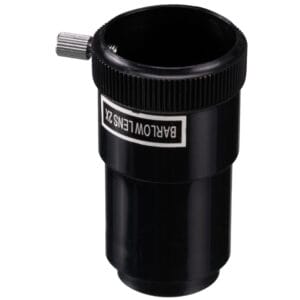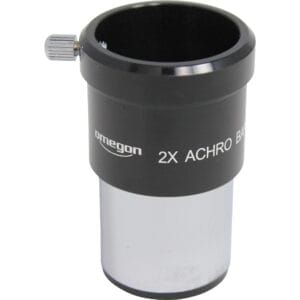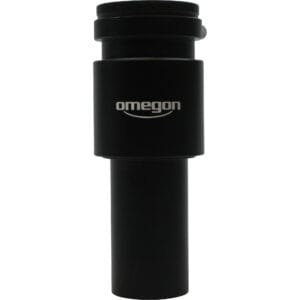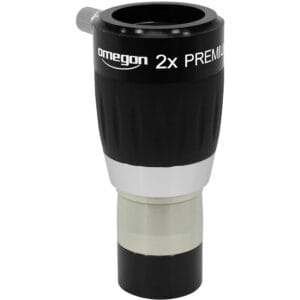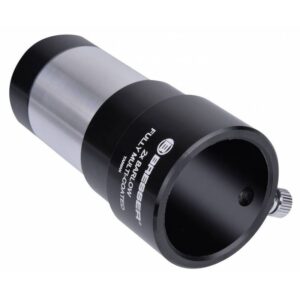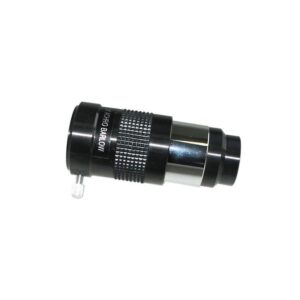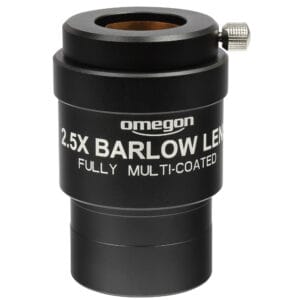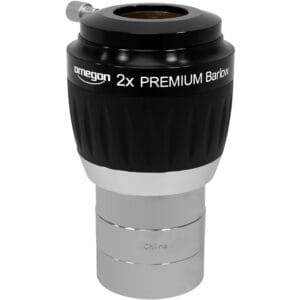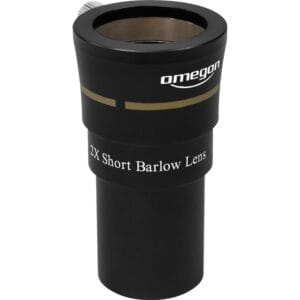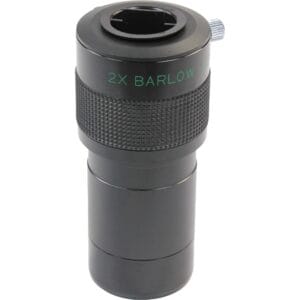Barlow & reversing lenses

Showing all 16 resultsSorted by popularity
Showing all 16 resultsSorted by popularity
Barlow & Inverted Lens
Barlow and reversing lenses are indispensable tools for any serious observer. A Barlow lens increases the magnification of all your eyepieces without purchasing an additional lens, while a reversal lens (erector) offers refractor users a comfortable, upright view for terrestrial and astronomical applications. These lenses take both your visual and photographic performance to the next level.
1. What does a Barlow lens do?
Doubling (2×) and tripling (3×): each eyepiece automatically gains two or three times its original focal length, ideal for planetary detail.
Image quality: high-quality achromats with additional glass layers minimize color and coma aberrations.
Ease of use: easily slide in or out of focuser, fits directly between eyepiece and diagonal.
2. When do you choose 2× or 3× Barlow?
2× Barlow: the most versatile choice; combines image sharpness while maintaining clarity.
3× Barlow: for really high magnifications on stable nights; suitable for lunar and planetary observations, seeing permitting.
Compatibility: Check that your focuser has enough backfocus to accommodate the extra length.
3. The reversal lens (erector) explained
Upright image: essential for terrestrial use, photography of bird and landscape observations.
Mechanism: A compact lens system that corrects the image, often integrated into refractor accessories.
Advantage in EAA: Combine with a camera for live images captured upright, without reverse orientation.
4. Build quality and coatings
Glass: Choose ED or FPL glass in your Barlow for minimal chromaticity and depth of field.
Coatings: multi-coatings >98% transmission, protective fluoride coatings for scratch resistance.
Mechanics: CNC-machined aluminum housing with Delrin collar for smooth and secure mounting.
5. Backfocus & installation
Backfocus check: Beforehand, measure your total chain length (including Barlow + eyepiece + diagonal) on a flat surface.
Focuser Adjustment: adjust tension or clamps to compensate for extra weight.
Photography: Test your frames for sharpness and stellar detail; small adjustments in the clamp mount can make a world of difference.
6. Use tips for optimal results
Start with standard eyepiece + 2× Barlow: learn about typical magnifications.
Pair with a star diagonal: Maintain a straight line of light and avoid reflection.
Avoid stacking multiple Barlows: leads to more aberrations and light loss.
Use a fine fokuser or motor focuser at high magnifications to avoid backlash.
20 Frequently Asked Questions about Barlow & Inverted Lens
What is the difference between a 2× and a 3× Barlow lens?
A 2× Barlow doubles the magnification, a 3× triples it; choice depends on desired magnification and seeing conditions.Can I combine a Barlow lens with a zoom eyepiece?
Yes, mount the Barlow before the zoom; test if you can still control the full focal length.Does a Barlow always lead to more chromatic aberration?
In inexpensive models yes; high-quality ED-Barlows have extra layers of glass to minimize that.How much backfocus do I need for a 2× Barlow?
Count on at least the length of the Barlow itself (30-50 mm) plus your eyepiece and diagonal distance.What exactly is a reversing lens?
An Erector lens module that corrects an inverted image to upright, often used in terrestrial refractors.Are universal Barlow lenses available?
Yes, most fit in 1¼″ and 2″ focusers with supplied reduction rings.Can I use a Barlow in astrophotography?
Absolutely, but expect a light loss of 0.5-1 stop; compensate with longer exposure times.How does a Delrin collar prevent scratching?
The soft plastic inner rim protects the anodization of your focuser and lens housing.Can I stack two Barlows for higher magnification?
It can be done, but leads to greatly increased aberrations and light loss; better is one 3× Barlow.How do I clean my Barlow lens?
Start with blower, then use microfiber cloth and optical cleaner; avoid spraying directly on the glass.Is a 3× Barlow suitable for planetary?
Only in stable seeing; in poor seeing, your image will become unsettled and out of focus.How do I mount an inverted lens in my refractor?
Replace or slide out the diagonal and insert the reversing lens into the focuser; lock gently.Does a Barlow increase field curvature?
A good Barlow adds minimal curvature; combine with a field flattener for photography.How do I know if my focuser can handle the extra load?
Test with your heaviest eyepiece + Barlow in vertical position; no noticeable deflection means enough bearing capacity.Do I use Barlow before or after filters?
Mount the Barlow in front of the filter wheel so that the filters always see the same field of view.Can I use my smartphone on a Barlow?
With smartphone adapter and short intermediate rings, it can be done for simple digiscoping.Does an inverted lens reduce sharpness?
A quality rector retains sharpness; cheap prismatic inverters may give some loss of detail.How do I choose between 1¼″ and 2″ Barlow?
For widescreen and photography, 2″ is preferred; 1¼″ is sufficient for purely visual use.How do I avoid backlash at high magnification?
Use a dual-speed focuser, clamp your Barlow firmly and avoid rail clearance.Why do I sometimes see vignetting with a Barlow?
The extra lens extends the light path; make sure you have enough opening in your focuser or use a lower magnification range.

